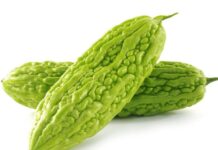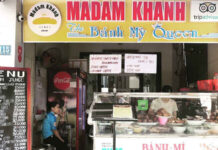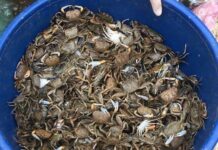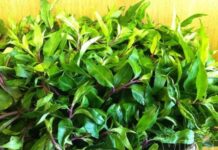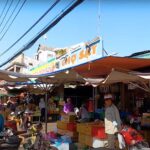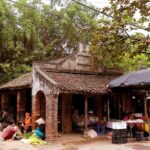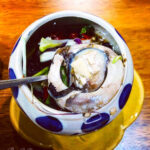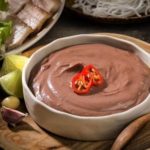The Unique “Bags” of Loc Binh Fair
Loc Binh Fair is a cyclic market that takes place every five days, creating a distinctive rhythm for this land. Unlike ordinary markets, the fair has a festive character, where people come not only to trade but also to socialize, have fun, and even find love.
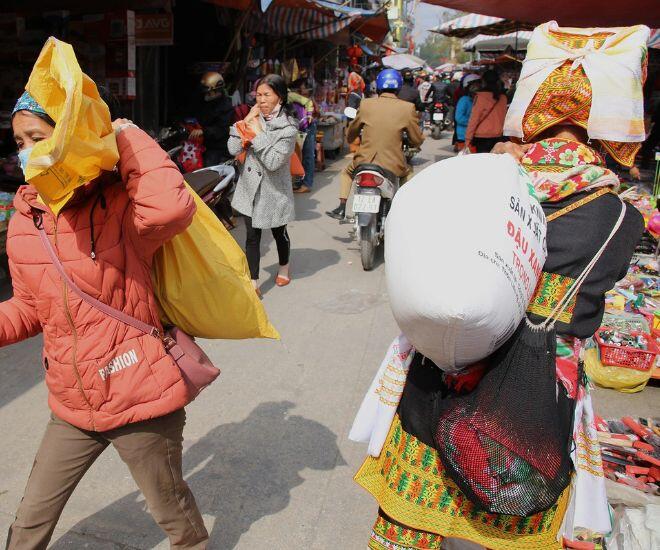
When you arrive at Loc Binh Fair, the first thing you’ll notice is the presence of hundreds of sacks. Nowhere else will you find as many sacks as in this fair. They are everywhere, from sellers to buyers, from the elderly to the young, everyone carries at least one sack, either slung over their shoulders or placed by their side.
Locals who come to the fair for shopping always bring at least one sack, which has completely replaced bags and backpacks for carrying goods. Most of the ethnic minorities here prefer to use sacks due to their superior convenience. Although they lack the handles of typical bags, these sacks can hold a large number of items, and when not in use, they can be folded compactly and easily carried.
The scene of locals casually strolling through the fair with rather large and heavy sacks slung over their shoulders has become a distinctive and unmistakable feature of Loc Binh Fair.
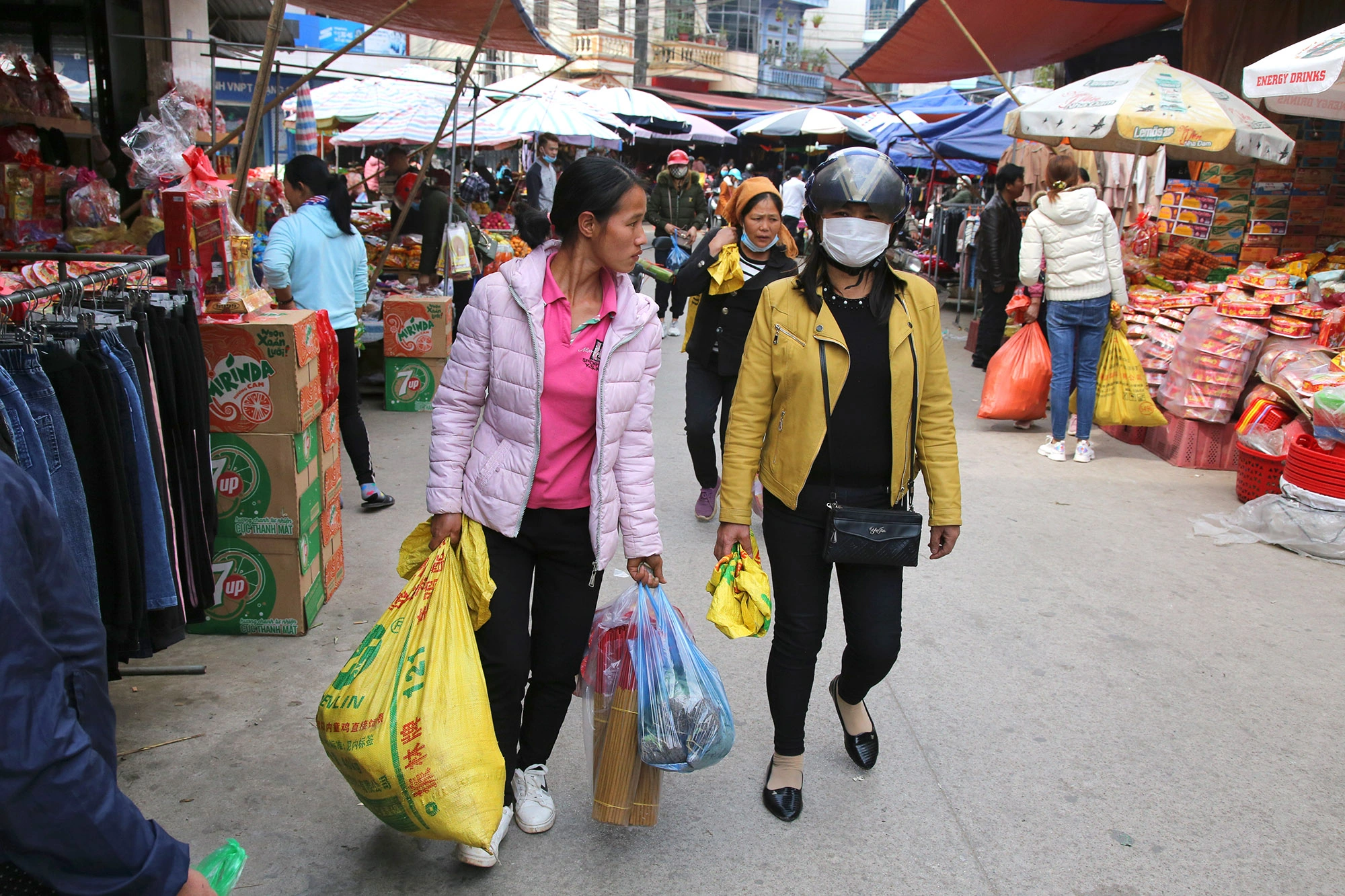
These sacks have an interesting origin. They used to be packaging for goods and agricultural products imported and exported between Vietnam and China. After fulfilling their initial purpose, they are collected and sold to fairgoers for just a few thousand dong each.
The sacks have become the dominant means of carrying goods at Loc Binh Fair. One sack can hold enough groceries for a whole week, including fresh produce, vegetables, and household items. This is also partly because the local community does not have a tradition of using baskets or backpacks like some other mountainous regions, so the sacks are highly favored and become the first choice.
A Colorful Cultural Space
The fair is divided into separate selling areas, forming a vibrant picture of the economic and social life of the border region. The area for vegetables, rice, and corn showcases the typical agricultural products of the highland region. The area selling herbal medicines and spices exudes the characteristic fragrances of traditional Vietnamese medicinal herbs. Especially, the area displaying the brocade products of the Tay, Nung, San Chi, and Dao ethnic groups is like a folk art exhibition, showcasing the creativity and dexterity of local women.
However, the most prominent and bustling area is probably the one selling livestock and poultry. Here, lively bargaining takes place, with buyers examining, touching, and negotiating in a friendly and intimate atmosphere. The calls and negotiations create a distinctive symphony unique to a mountain fair.
Cuisine Specialties of the Border Region
Loc Binh Fair is not only a shopping destination but also a culinary paradise offering unforgettable specialties. Visitors can indulge in roasted pork and duck with the fragrant flavor of mac mat leaves, delicious khau nhuc, or locally made char siu. Especially, don’t miss the specialty rice wine of the Dao people, with a strong flavor that embodies the essence of the mountainous forest.
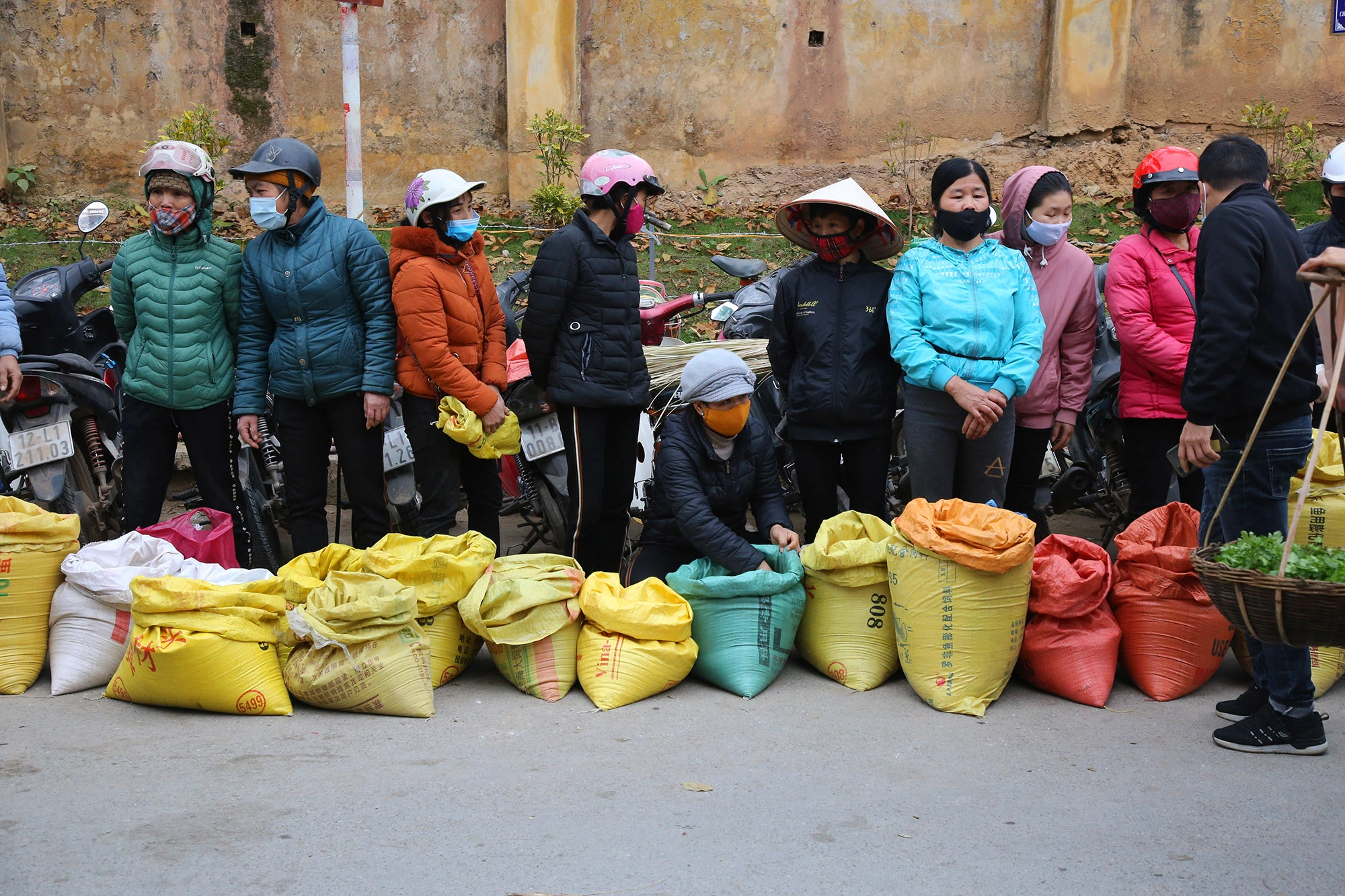
The most impressive dish is probably the locally famous sour pho. With its unique flavor, completely different from traditional pho, this dish will leave a lasting impression. The harmonious combination of mild sourness, subtle sweetness, and distinctive spices creates an unforgettable culinary experience.
The Unique Profession of Chicken Castration
Among the traditional professions at Loc Binh Fair, one is considered unique and can only be found in mountain fairs: chicken castration. Professional castrators choose an empty spot in the fair to set up their workspace, patiently waiting for local people to bring their cages of roosters to hire their services.
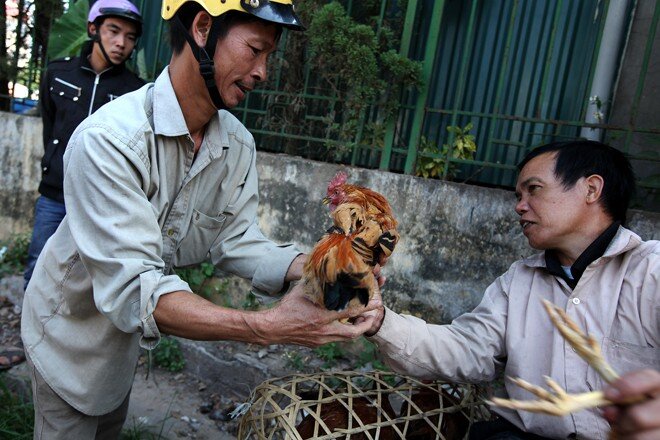
The period from September to October of each year is the peak season for this profession, as it is the most convenient time to castrate roosters to fatten them up for the Lunar New Year. This is also the busiest time of the year for chicken castrators due to the increased demand from locals.
One of the most renowned practitioners of this trade is Mr. Loc Van Loi, an ethnic Nung from Na Mu village in Huu Khanh commune, Loc Binh district. With over 20 years of experience, Mr. Loi is considered one of the most skilled chicken castrators in the region. His fame comes not only from his mastery of the technique but also from his innovative improvements, such as creating a convenient tool for holding down the chickens’ legs.
When Mr. Loi arrives at the fair, he often starts working immediately, sometimes without even taking off his helmet, as customers have been waiting for him since early morning. This demonstrates the trust and high regard the locals have for his skills.
The chicken castration technique used at Loc Binh Fair is the traditional side castration method, passed down from generation to generation. Interestingly, this technique does not require any disinfectant solution, relying solely on the experience and skill of the practitioner.
The process begins by plucking the feathers from the rooster’s armpit area. Then, a 2-centimeter incision is made with a sharp knife. A tool resembling a bow is used to hold open the incision, creating a convenient workspace.
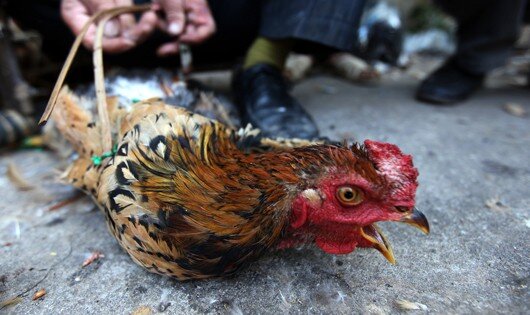
The most crucial step is the use of a tool similar to a noose, skillfully inserted into the spermatic cord. With skillful fingers honed by years of experience, the practitioner deftly severs the cord, removing the testicles, which the locals poetically refer to as “ngoc ke” (jade rooster).
With deft and practiced movements, within just 5 minutes, the castrators complete the procedure, rendering the proud roosters infertile. The current service fee is 5,000 dong per chicken, which may seem modest, but with a large number of chickens, the income of these practitioners is quite stable.
During peak season, an experienced castrator can handle 150 to 200 chickens per fair, earning nearly one million dong in a day. This demonstrates that chicken castration is not only a preserved traditional profession but also a stable source of income for those skilled in the trade.
Interestingly, even the discarded testicles have significant economic value. The “ngoc ke” are collected and sold for 250,000 dong per kilogram, reflecting the local culinary culture where nothing is wasted, and everything has its value and use.
A Unique Cultural Feature Worth Preserving
Loc Binh Fair, with its traditional chicken castration profession, is a testament to the diversity and richness of Vietnamese folk culture. In the context of modernization and globalization, such unique cultural features become even more precious and worthy of preservation.
During the peak season, the sight of locals from various villages carrying cages of young roosters to the fair to be castrated and fattened for the Lunar New Year creates a vibrant picture of rural economic life. This is not just a business activity but also an opportunity for the community to gather and connect.
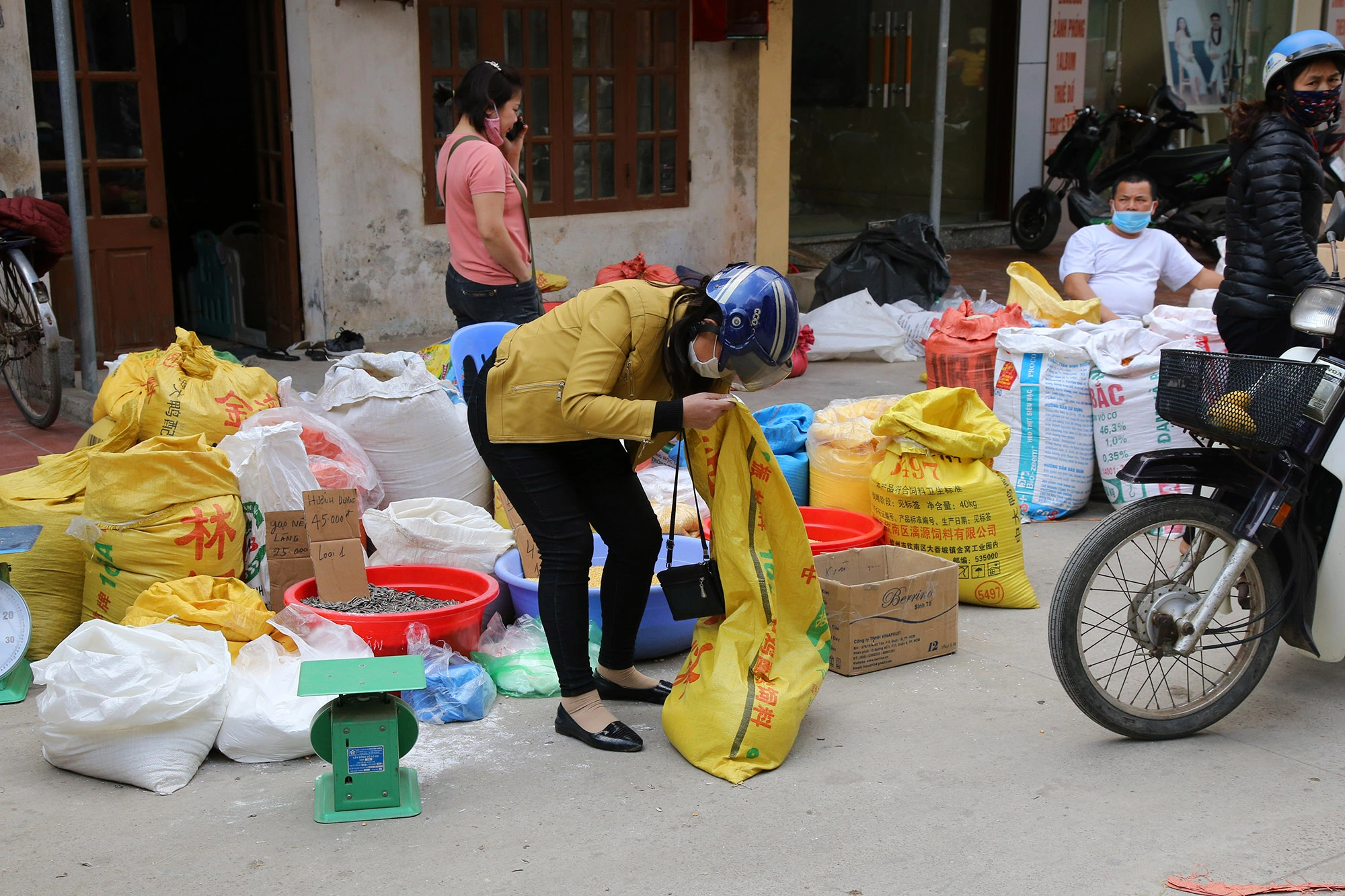
Loc Binh Fair has affirmed its important role not only as an attractive tourist destination but also as a guardian and promoter of precious traditional cultural values. It proves that a community can embrace modernization while preserving its unique cultural identity, creating a fascinating appeal that cannot be found elsewhere.
For travelers seeking to explore Vietnamese folk culture, Loc Binh Fair will undoubtedly offer unforgettable experiences and insights into the daily life of people in the northern border region.
The Weird Delicacy of Phu Yen: A Tasty Treat or a Scary Adventure?
The ocean tuna is a delicacy in Phu Yen, where it is carefully prepared and slow-cooked in a clay pot with a blend of spices, including pepper, chili, onion, and fresh ginger. This unique cooking method infuses the tuna with a delightful aroma and a tantalizing taste that has made it a renowned specialty of the region.













